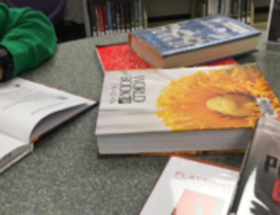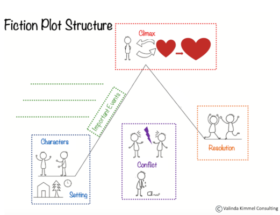There’s a lot of buzz in the education world about ways to motivate students to read, but what about enticing teachers to read more children’s literature?
The life of a teacher is packed with responsibilities inside and outside the classroom, but making time to read a wide variety of children’s/teen’s books is vitally important. There are a few compelling reasons you’ll want to seriously consider making time in your crazy schedule to read more kids’ books.
It Will Create a Community of Readers
When teachers read children’s, middle grade, or young adult books (depending on the grade level they teach), it can be the first critical step to creating a culture of independent reading in the classroom. Teachers work hard to put systems in place in their classrooms to encourage students to read independently. This is a great start. But the magic happens when a teacher shares with her class a great book she’s just finished; it clearly communicates to students that reading for pleasure is a normal, essential part of a reader’s life—even when you are an adult.
Taking the time to read popular, current children’s literature allows the teacher to be a strong role model for students. Imagine what happens next: the teacher can then easily engage in book talks, which naturally leads to students wanting to read those books, and before long kids are recommending books to other students and to their teachers. These great conversations about books gradually work to build a culture of reading in a community of emerging readers.
It Will Make Lesson Planning Easier
Reading children’s literature for pleasure also gives teachers a greater repertoire of titles to choose from when planning instruction. Planning for targeted mini-lessons is a whole lot simpler when teachers have a long list of engaging books to choose from. You can always pick out the teachers who read a lot, as they rarely struggle with which books to use for modeling reading strategies during Reader’s Workshop.
Wide reading also allows teachers to know which books will enhance engagement by matching their students’ interests. We’re not just talking about picture books here. Beguiling excerpts from great middle grade and young adult novels can be used for modeling and practicing reading strategies in the upper elementary and middle school classrooms. How great to think that teachers can use books for instruction that students would love to read on their own or find similar books by other authors.
It Will Inspire Your Personal Growth
Quality children’s literature changes the lives of readers. Even if you’re an adult, you will be transformed as an individual by the power of the words and ideas of great authors. Just this year, I’ve learned about the making of the A-Bomb and the different organizations that formed a coalition to fight for voting rights during Freedom Summer. I’ve read about a host of true-to-life characters that have captured my heart: a young girl who grows up in a family that owns a funeral home, two boys whose paths cross because of a madman, a teacher who discovers a sixth-grade girl can’t read and opens the world of reading to her.
Oh my gosh, I could go on and on about the ways my heart and mind have been radically altered by the great fiction and nonfiction titles I’ve had the privilege to read this year. You’re never too old to be moved by the powerful, magical words of a gifted writer.
Let’s be real, though.
Is it difficult to think about adding one more thing to your already busy life? If so, here are some practical ideas to help you get into reading children’s literature:
- Create a Goodreads account and follow people who read a lot of kidlit. Donalyn Miller, Colby Sharp, and John Schu, are a few of the people I follow, and they always have great book recommendations.
- Find a way to listen to books, especially novels, so you can read while you’re doing other things. My commute to work is about 20–25 minutes, but that means I get in almost an hour of reading a day just while I’m driving. When I work out, work in the yard, or do laundry I also listen to books. I find when I use audiobooks, I end up reading a lot more books. I subscribe to Audible, but you can also check out free audiobooks from your local library.
- Start following teacher or librarian blogs to get great book recommendations so you’re not hunting down titles on your own. I follow Travis Jonker at 100 Scope Notes, Margie Myers-Culver at Librarians Quest, Franki Sibberson at A Year of Reading, Jen Vincent at Mentor Texts, and Jen Robinson at Jen’s Book Page. These are just a few of the amazing people blogging about great books they read.
- YALSA and ALA annually share the best kid’s books on their organization websites. These two sites are the first place I go each year when they publish their new lists.
No need to freak out about how you’re going to find time to read great children’s book titles. Like anything else in life, start small.
Summertime is the perfect time to give kidlit a try. Start with a few picture books. Throw in a graphic novel or two. Grab an easy-to-read chapter book, check out an intriguing audiobook title; before long, you’ll be a bona fide kidlit book nerd.
What surprising benefits have you found reading kidlit? What other tips and tricks do you use for squeezing reading time into your busy schedule?










